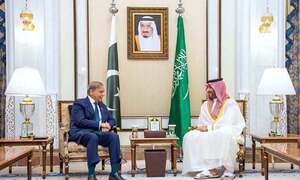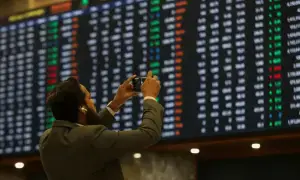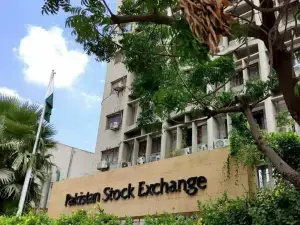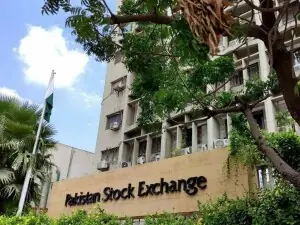EDITORIAL: The IMF’s (International Monetary Fund’s) ninth review is pending for as long as Ishaq Dar is the finance minister. And from day one, the finance minister and others in the government have been hoping the IMF’s pending staff-level agreement to come through. The finance minister is still hopeful that the agreement will take place ‘soon’.
However, markets are not taking his words seriously. In the history of his current tenure that began in October 2022, there have been quite a few incidents that show how markets lost their confidence in him. When he joined the Shehbaz Sharif-led cabinet, he became fixated on his ‘great idea’ of currency. There were two anti-market policies running parallel – one was of imports restrictions and the other was of currency fixation to an artificial peg. The blend did not work altogether. Parallel exchange rate markets were developed, offering different rates. And the IMF team did not come for technical talks (in February) before the currency peg was to let go.
That was the time when the Dar bubble was busted after four months in power. That was the time when the currency lost any inherent strength it had. Had that artificial peg not been imposed, experts are of the opinion that the PKR/USD parity could have been under 250. And the fundamentals suggest the same too. However, Dar and his fixation seem to have done irreparable damage.
The question is what is likely to happen to the IMF programme. And why is the SLA (staff-level agreement) still pending when the government has undertaken all the tough measures it has in hand to comply with the IMF’s prior conditions. The issue is debt sustainability and that is extremely important for the IMF.
For the external debt to be sustainable, the country’s foreign reserves have to be at a certain level. Given the current account and financial account position and commitments of rollovers, the gap is estimated at dollar 7 billion by the IMF and the government was negotiating it to be around dollar 5 billion. The agreed number is close to dollar 6 billion. That has to be pledged before the SLA and has to be in the kitty before IMF’s board approval.
Out of this dollar 6 billion amount, the government has a commitment of dollar 3.5 billion assured: dollar 2 billion from Saudi Arabia, dollar 1 billion from the UAE and dollar 0.5 billion from multilaterals. The remaining dollar 2.5-3 billion is missing. The finance ministry was giving the impression that the impediment to the release of tranche was dollar 3 billion from Saudi Arabia and the UAE; and with these commitments, the SLA should be on its way.
However, they were double accounting for some of the multilateral loans. And some commitments were assumed to be part of gross financing needs without any regard to the timelines of those commitments. Either the government failed to do the basic arithmetic right or the exaggerated exuberance was willful and deliberate.
Whatever the case may be, one thing is crystal clear that there is no IMF bailout or tranche without the commitment of remaining dollar 2.5-3 billion gross financing needs. And the issue of debt sustainability is not Pakistan-specific. In other words, it has nothing to do with domestic or international politics. There are many economies under debt distress in the developing world. And the IMF is crystal clear on debt sustainability and pledges from partners before approving loans to any country.
That is one message the Business Recorder team got loud and clear while covering the spring meetings of the IMF earlier this month. Has the newspaper’s team arrived at some wrong conclusion? Ministry of finance is requested to answer this question as early as possible. In this newspaper’s view, however, the ministry is aware of the fact that a wave of confusion and anxiety with regard to the IMF programme pervades the entire country. It’s, therefore, a time a few things were said to clear the air.
Copyright Business Recorder, 2023























Comments
Comments are closed.